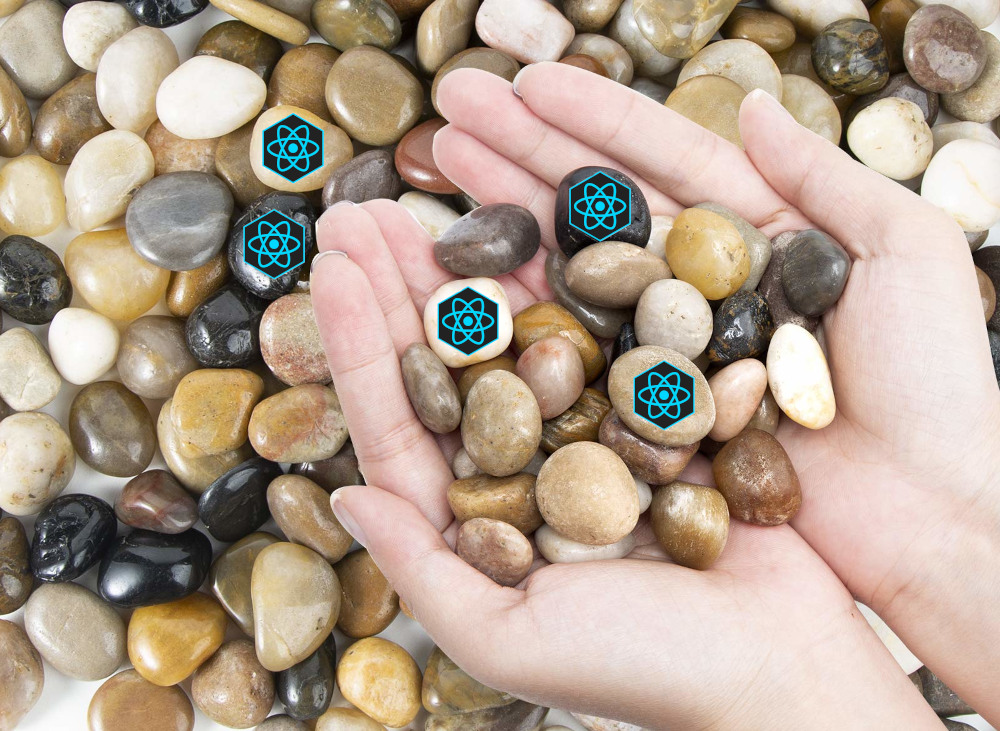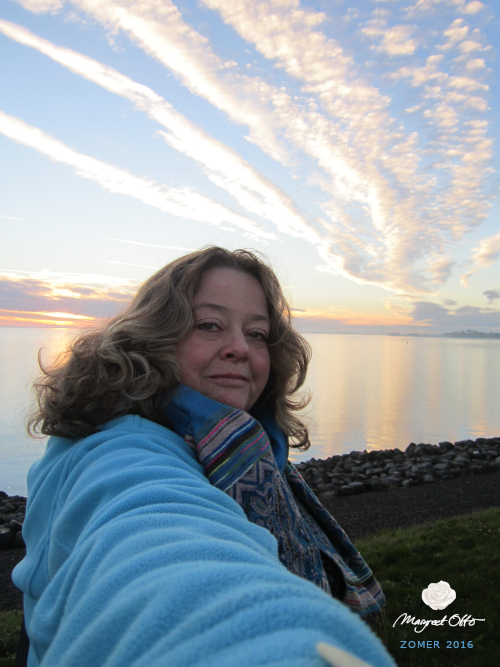Me along the IJssel-lake
So that’s me taking a hike along my beloved IJssellake. Here you can see my puffy face and cheeks due to high dosage of prednisone at the time. This I need when not having sufficient T3-thyroid hormone. It’s all very complicated! And by the way, did you notice the white dispersed contrails in the air? Oh well (lol).
This is part 3 of my RAI series. If you haven’t read the first two, please start here: RAI 1 – MY STORY
To continue from the previous part: Many organs and cells in our body absorb thyroid hormone and thus iodine in their metabolism. Because Iodine is important for the metabolism of all people (and mammals), which we ingest through food and is absorbed by the stomach.
I-131 in a nuclear disaster
In the event of a nuclear disaster, iodine pills are provided by the government to citizens living in an area around a nuclear power plant. In such case iodine becomes vacant, thats why people prefer to store it in advance. But, is iodine alone sufficient? Indeed, the thyroid is the organ that first absorbs iodine to link it to proteins from food. That is for the production of various forms of thyroid hormone. But there are other chemicals as well, which we will get later into.
Increase in thyroid disorders
First it is important to notice that the uncontrolled release of radioactive iodine into the environment, as well as other chemicals that interact with iodine, may explain why thyroid disorders have increased exponentially in recent decades.
You don’t see it, you don’t feel it, you don’t smell it, you don’t taste it
After all, radiation spreads throughout the entire ecosystem, although it initially concentrates in the area around a nuclear power plant when released uncontrolled. But even at further distances you don’t hear it, you don’t see it, you don’t taste it, you don’t smell it, and you don’t feel it either, except at very high doses. But even small doses can cause a lot of damage to the body.
Iodine pills?
There is a chance that thyroid disorders will increase even more in those who ingest radioactive iodine unknowingly. And perhaps also a slight damage to other organs as shown by I-131 (see scinti scan in parts 1 and 2 of this RAI article series). Believe me, ingesting it is an ordeal. However, iodine pills are not a sufficient plaster on the wound for radiation released during a nuclear disaster, or from radiation leakage after long-term storage.
Other radio-active materials
After all, in the event of a nuclear disaster at a power plant, or a disaster involving nuclear waste at a disposal site, or during transport, other forms of radiation are also released, which no iodine pill can yet cope with. Spent fuel contains large amounts of radioactive uranium, plutonium, cesium and many other isotopes. These types of radiation spread through the body in a different way (accumulate, among other things, in the spine, see part 2 about RAI).
How long does it radiate?
There is low, medium and high radioactive waste. Intermediately active radiation is, for example, cesium Cs-134 with a half-life of 2 years, and cesium Cs-137 with a half-life of 30.2 years.
I’m not sure about what I read online about the halflife of extremely high radioactive substances. Such as “cesium Cs-135, whose half-life has been calculated to be 2.3 million years”, as well as the “longest-lived isotope of Iodine I-129 with a half-life of 15.7 million years (after which it decays by B decay to the stable isotope xenon-129), and Thorium-232 with a half-life of 14 billion years.”
I myself can hardly imagine such a very long period. Are the scientists sure about this? It is simply inconceivable for us people with an average life expectancy of around 80 years.
What now?
Technically speaking, we may only be able to verify the above mentioned half-lives the moment they no longer radiate. According to the ‘Central Organization for Radioactive Waste’ (COVRA), highly radioactive waste no longer produces heat after 100 years of cooling. In the Netherlands, this storage amounts to 68 m3. However, the Borssele nuclear power plant produces 10 tons of nuclear waste every year.
Green Peace?
According to the international environmental organization Greenpeace, highly radioactive waste continues to radiate for about 240,000 years. The highly radioactive isotopes therefore pose a danger as long as there is no secure storage for the next thousands of years, as well as when something goes wrong during the production of nuclear energy in the power stations.
We must therefore deal with radiation even more carefully than we do now (for example, we can ask ourselves whether storage near the coast in the Netherlands is wise. Or what has been going on for some time in Germany: with radioactive storage in underground leaking salt domes). In addition, radiation waste must be stored securely for a long time in order to further decay into stable isotopes.
Appropriate Measures
It is therefore advisable to take appropriate measures, even though we still know too little about how radiation will behave in the very distant future. Better to be safe than sorry, right? The LAKA Foundation, a documentation and research center on nuclear energy, believes that highly radioactive nuclear fission waste, which continues to radiate for up to 200,000 years, is the greatest danger:
“An additional problem is that it continues to emit a lot of heat during this extremely long period of time, to which the storage environment also responds. Moreover, that period of time is so enormous that natural disasters and other catastrophes cannot be ruled out. In short, far too many problems. The production of all that waste must stop immediately: All nuclear power stations and other nuclear factories must close.”
Storage where?
Nuclear energy is therefore a major threat to our planet and all living things on it. This type of radiation can leave a trail of destruction for at least thousands of years.

The storage of nuclear waste is also very expensive, because the containers containing the radiation have to be replaced every so often. Otherwise, the radiation can penetrate the insulation material, causing it to leak into the outside world. In fact, both the containers, the insulation material, and the environment of the storage space become contaminated over time and must also be stored again.
Stable areas
Given the increased number of earthquakes, ‘fracking’ on a global scale, the sudden or otherwise rising water of the oceans due to earthquakes, the melting glaciers and polar ice caps, as well as increased cyclones and hurricanes, torrential rains, mudslides, forest fires and ‘what not’, few areas are geographically stable. So there are few areas suitable for centuries-long storage.
Lasting centuries
Which areas are suitable for storage? Just a first broad estimate: Higher areas with stable earth layers on rock formations are suitable. Not suitable are: islands, land below or just above sea level or near river beds, areas where gas extraction takes place or where there is a risk of earthquakes.
Small pebbles
And really NO ONE wants to store radiation waste in his or her backyard. However, according to Vladimir Megre that is actually what we should do! Small portions of fissure waste can be distributed over many family domains. His suggestion is to place one portion in the middle of every hectare (2 ½ acres) and then 30 feet underground! (9 meters). Pondering on this, such portion of radio active waste might have the size of a small pebble, or probably even half of that size?

How much RAD it should contain is a question for experts. From my personal experience, 19 millicuries of radio active iodine is already a great danger for our health when it is released in the environment. And this type of radiation only has a half life of 8 days. So what about the other radio active particles that will be radiating for centuries or even millenia? What would be a safe storage amount for such radiation? Just 1 or 3 mCi per pebble? A question for the experts!
Evenly spreading small radiating portions in the middle of all hectares is the safest way of storing fissure waste. Because, if two neighbors place their portions on the border of their adjacent hectares, cluster formation of radio active waste can occur. Therefore, placement in the middle of every hectare ensures a proportional spread, especially when we consider it might be hundreds (or even thousands?) of hectares that need to be appointed for this purpose.
This spreads the risk that during an environmental disaster or other unforeseen circumstances, a large amount of radiation could leak into the environment due to damage to the storage space and the protective casing of the radioactive waste. That would be disastrous for all life on Earth, wouldn’t it?
Dispersed storage
However, such dispersed storage over many hectares will come at a cost. Suppose that in the near future every hectare receives one tiny amount of radiation for centuries-long storage. How often per year or every how many years should it be checked? And how often does the protective covering need to be renewed every few years? Questions that radiation experts may know the answers to.
NOW or never
Considering the current climate problem, what do you think, should we put the planning for early implementation of this plan on the agenda NOW? This involves politicians and professionals from different disciplines. But also We The People.
Costs and benefits
Let us first deal with the radiation waste problem sufficiently, and therefore have it carried out to everyone’s satisfaction, and only then let us build new nuclear power stations. It is certain that no one will want the latter anymore, unless of course there were better methods of dealing with fission waste.
The costs of disposal of radiation waste, spread over an extremely long period of time, are extremely disadvantageous compared to the short-term benefits. And what’s more, are we burdening future generations with it and washing our hands in innocence? Verily, radiation is no easy feat! Therefore the question is, what kind of bright future do we wish for ourselves and the planet?
When the alarms go off
Then it’s too late. Let’s face it. And that will not be a pleasant hearing in times of storms, floods, earthquakes and heavy, prolonged driving rain. Especially when we know that we could have prevented nuclear disasters by taking timely measures. As mentioned, transport all radioactive waste to areas preferably 30 to 40 meters (like 100 feet) above sea level based on stable underlying rock layers and distribute it in small portions over very large areas.
Ready or late?
To err is human and we only have to remember the disastrous nuclear disaster at Fukushima on March 11, 2011 and we know that this is NOT completely unthinkable. Its dramatic consequences are still incalculable.
But nowadays, both major storms and earthquakes can be predicted even more accurately than before. Perhaps it would be advisable to switch off the nuclear reactors at the slightest signal or doubt regarding a weather forecast of a storm or earthquake, even if only for a temporary stop? (if one does not want or cannot proceed with complete dismantling).
Timely intervention
People working in this industry, both employees and managers, could be assigned a separate task or voluntarily undertake to intervene in a timely manner. Perhaps thousands to millions of lives can be saved and nature can be preserved. There is no other way.
Just explain
Can we ensure that the radiation waste is distributed evenly over thousands of hectares of agricultural land spread over large areas? Can we ensure that in the (possible) thousands of years that follow, there will be a simple logistics system to replace the radioactive capsules in a timely manner? And can we then re-encapsulate and store them, including the surrounding soil of the storage areas? And what does that cost? Yes, a lot of money. Much more than what it brought us. But hey, explain it to your great-great-great-grandchildren and so on if you conveniently forget about them for a while.
An idea
And besides, can we just stop production? Can we bear the burden of dismantling power stations together? Because we can no longer leave the outdated nuclear power stations to their fate due to the market forces of our current economy, can we? So I mainly focus on those who have a large budget for this and preferably want to donate voluntarily.
How about taking down the names of the people who make generous donations towards this end? (also for contributions from people with a small budget). As far as I’m concerned, let’s have a message of thanks with the names of these people engraved in gold, so that it can still be read centuries later. Then the gold still has a genuine ethical value, because you cannot eat or drink it.
It depends
Oh well, and of course we can just leave it to chance! Not true? Just like the side effects of my medical treatment at the time.
The organization:
‘The International League Of Atomic Women’
claims the following about the medical treatment with the isotope I-131:
‘It depends where it all lands’.
Various factors
This refers to the radiation that spreads uncontrollably in the body and which can vary considerably from person to person. After all, with I-131 it does not only depend on the size of the dose. It is also important how much stock of iodine is present in the body. For example, sometimes there is iodine deficiency. Then the radioactive iodine will spread deeper into the body tissues and remain active in the metabolism. (Moreover, for the experts among us, a thyroid uptake scan can give a completely different result a day later).
Different effect
With specific medical treatment with I-131, the dosage may also have a different effect in people who no longer have thyroid function. For example, after surgical removal of the thyroid gland. When these people receive a thyroid up-take scan to determine whether thyroid cells are still active in the body, they are not allowed to take replacement thyroid hormone for several days.The radiation will then not remain in the tissues and organs for a long time and will quickly leave the body. This is because I-131 is not linked to thyroid hormone.
Treatment protocol?
No empirical research has been conducted into the effect of this medical treatment in the short and long term. Except with guinea pigs. Nor does it look at all the mutual differences and differentiations that occur under different conditions and circumstances. There is also no official recognition and medical treatment protocol for people with injuries caused by radioactive iodine (or other forms of radiation).
At World level
Even at a global level, it is impossible to predict exactly how the various radioactive substances will behave after a few centuries. Let’s all just hope that it won’t be too bad. However, in the first week of April 2020, forest fires broke out in the area around Chernobyl (where there was a nuclear disaster in 1986). Quite unusual for this time of year as we are in the first month of spring here in the Northern Hemisphere.
We will continue
However, increased radioactivity in the air was measured due to the intensive fires. But this does not burn or extinguish the radioactivity. It simply ends up somewhere else with the combustion residues and carbon. With a strong wind we also have a radioactive storm to deal with. And where does it all end? It makes me very sad to see and hear these kinds of news reports. And that is why I have decided to also publish this third part in the RAI series. I therefore also use the motto of The International League Of Atomic Women:
‘We may as well move forward,
because we can’t go back’.
Atomic Woman
© 2020-2024 | Margreet Otto Wilschut
Source: www.margreetotto.net
RAI 1 – MY STORY
RAI 2 – WHAT IS IT?
RAI 3 – NUCLEAR ENERGY
You are here
Back to MENU

